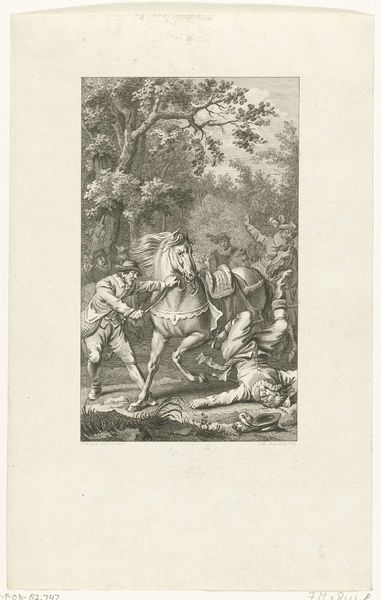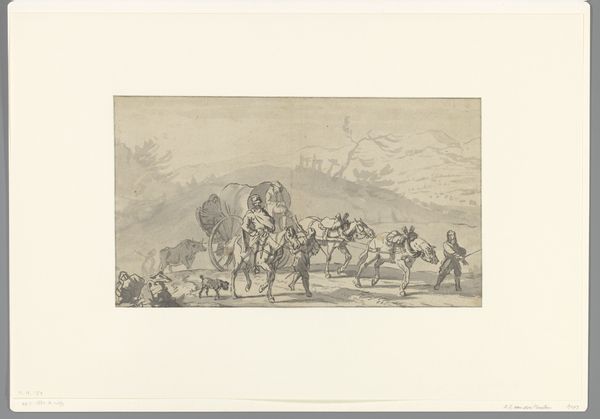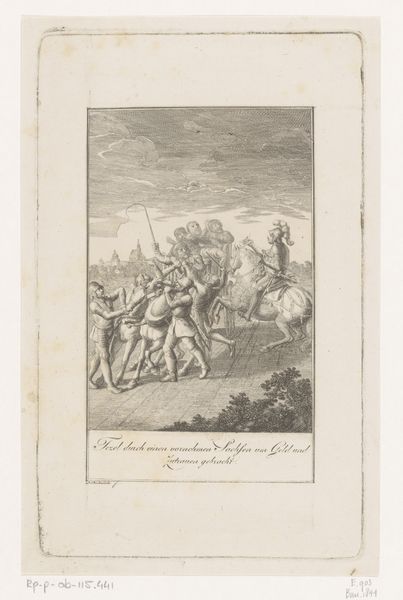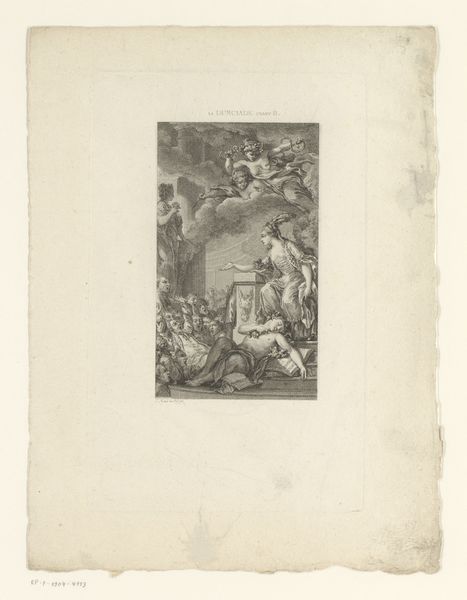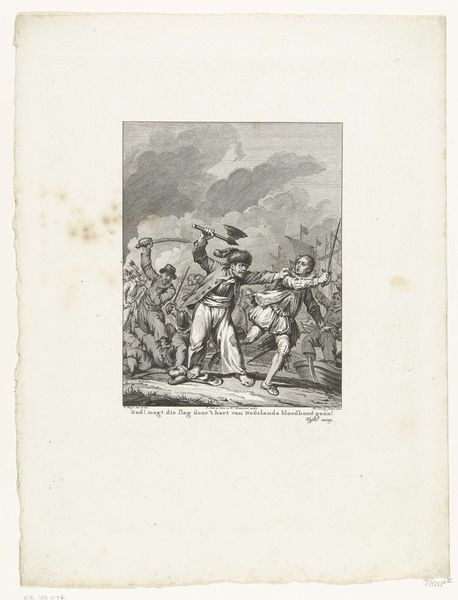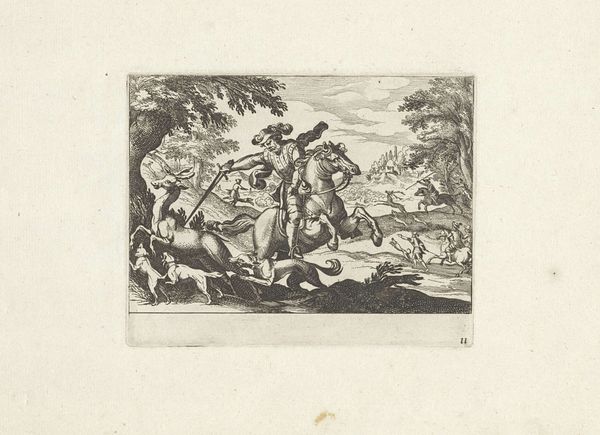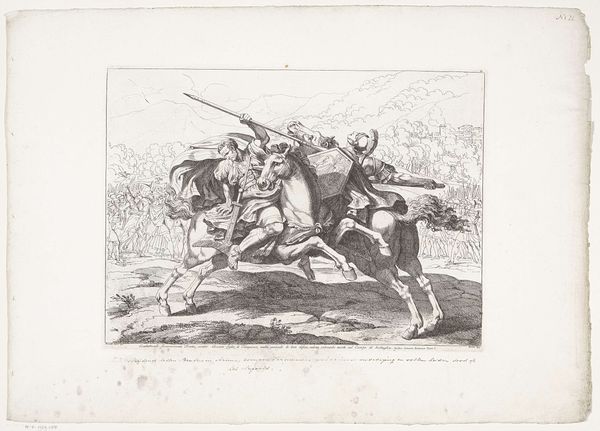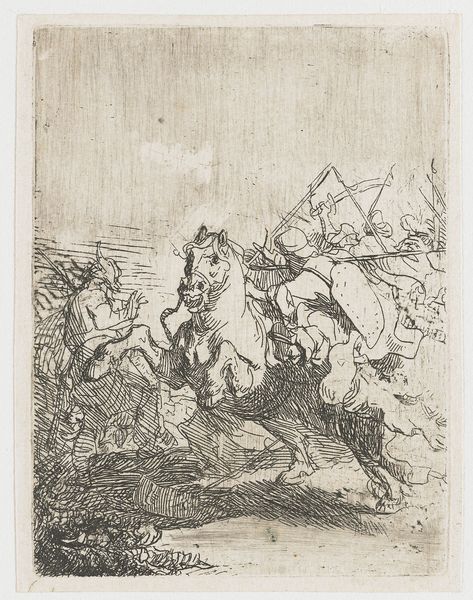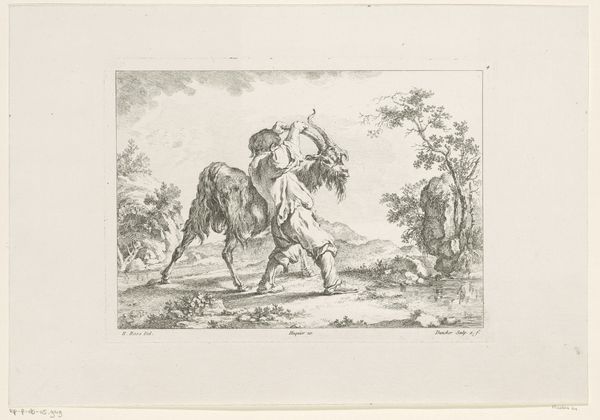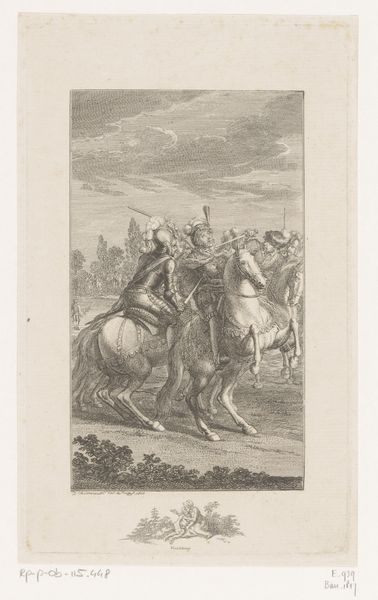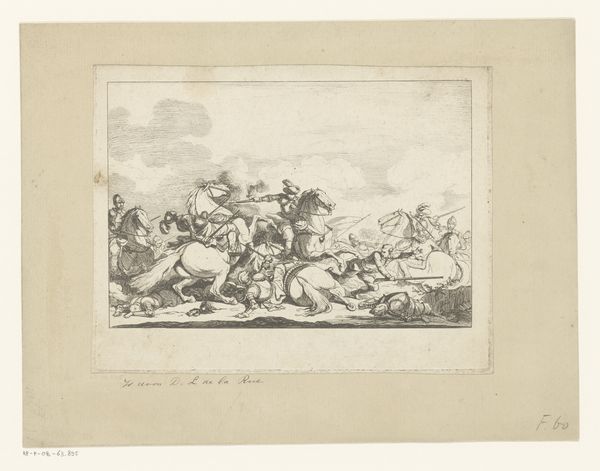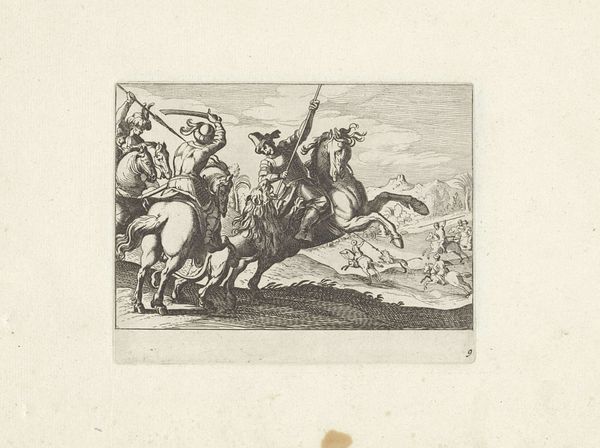
Dimensions: height 270 mm, width 215 mm
Copyright: Rijks Museum: Open Domain
Curator: What we have here is an engraving dating back to around 1780, titled "Gevecht tussen Romero en Hendrik van Nassau bij Mons, 1572," or "Battle between Romero and Hendrik of Nassau at Mons, 1572". Theodoor Koning is credited with its creation and you can find it in the Rijksmuseum's collection. Editor: It's remarkably chaotic, isn't it? Even within the rigid confines of the engraving technique, the artist conveys a sense of wild energy. Look at how the figures are piled on top of each other, and how the clouds in the background mirror the turmoil below. Curator: Absolutely. Koning clearly intended to portray not just the event itself, but also the immense exertion and the materials necessary for such a battle, all laid bare on this print. We should recall that engravings like this, although depicting important military and political conflicts, were widely distributed. So, they are, in essence, an artifact of mass media. Editor: Precisely! The medium of printmaking lends itself to dissemination and documentation. But what strikes me is the dynamic composition; the placement of light and shadow creates a captivating sense of depth and movement. The stark contrast adds to the dramatic tension. Curator: I wonder what the distribution chain of the printed image looked like? How the cost of printing defined its circulation? This informs our understanding of who was targeted with such imagery. Considering Koning’s labor also challenges Romantic notions around "genius". Editor: Good point! Analyzing how these kinds of artworks circulated informs our interpretation. However, one mustn't neglect the baroque-style dynamics in play—the intense drama created by the figures on horseback dominating the foreground. It creates a visceral impression of warfare. Curator: Of course. Understanding the visual cues contributes to understanding what feelings Koning may have tried to evoke through his art, thus engaging its intended consumers. It all relates back to how such printed sheets shaped the worldview of many. Editor: Yes. It all makes the image all the more remarkable. I feel it presents an entry point into thinking about the historical intersection between artistic style, distribution models and labor within a particular culture. Curator: Indeed. Looking closely at the work involved can make us consider both the tangible aspect, that the image as a flat sheet could be physically circulated, and how the event affected the course of history for ordinary people. Editor: Well, on that note, thank you. The more one looks at "Battle between Romero and Hendrik of Nassau at Mons," the richer the network of connotations.
Comments
No comments
Be the first to comment and join the conversation on the ultimate creative platform.
